Klout has officially stormed the gates of the supplement industry, with a frenzy of supplement releases that can only be called an onslaught. PricePlow's brand to watch in 2023 is on a tear for their sophomore season, and up until now, they haven't even released their biggest and most aggressive label!
The big reveal is upon us -- after comparing updated versions of their two original pre-workouts, Mamba and Karma (Mamba is high-energy, Karma is high-nootropic), Klout is putting out a third pre-workout -- and this one hits all of the notes:
KAIO: Klout's Final Destination Pre-Workout
Klout KAIO is Klout's Level 9000 style pre-workout supplement, built to bring speed, power, mental acuity, and top-level strength to your workout game. This formula bombards you with eight different trademarked ingredients, providing focus, power, and high energy levels.
And what's not to love about this branding?! KAIO's labels are, for lack of a better word, downright insane. There are 25 servings per tub, and each single-scoop serving has 382 milligrams of caffeine, just so you know how this beast's dialed in. But there's no citrulline inside - this one's all about nitrates for pumps.
So if nothing else, you can expect some slightly different flavoring, as Klout is able to get away from flavor systems that citrulline supplements sometimes get pigeonholed into. It launches exclusively at GNC, and is sure to shake the shelves up.
In this article, we do a massive ingredient formulation breakdown for KAIO, and showcase a cool new form of Alpha-GPC that we think other brands will be copying. Let's dig in, but first, sign up for PricePlow's Klout news alerts so you get notified when there are updates on the product or from the brand:
Klout KAIO – Deals and Price Drop Alerts
Get Price Alerts
No spam, no scams.
Disclosure: PricePlow relies on pricing from stores with which we have a business relationship. We work hard to keep pricing current, but you may find a better offer.
Posts are sponsored in part by the retailers and/or brands listed on this page.
This area is reserved for Team PricePlow's upcoming videos.
Subscribe to our channel and sign up for notifications so you catch it when it goes live!
Klout KAIO Ingredients
In a single 1 scoop (13.2 gram) serving of KAIO Pre-Workout, you get the following:
-
PWR Performance Max
The ingredients in this section were chosen for their ergogenic effects – an ergogenic aid is defined as a substance or technique that can improve athletic performance. The ingredients in Klout's PWR Performance Max blend will help you push the limits of your physical performance in the gym.
-
Beta Alanine – 3,200 mg
Beta alanine is one of the supplement industry's go-to endurance boosters. It combines with an amino acid called L-histidine to form carnosine, a dipeptide molecule that concentrates in muscle tissue, where it helps your muscles buffer (remove) lactic acid.[1] The reason this matters is that lactic acid, a metabolic byproduct generated during both aerobic and anaerobic exercise, causes fatigue as it builds up.
Decreasing the concentration of lactic acid in your muscles at any given time is a viable strategy for increasing athletic endurance – and that's exactly what beta alanine supplementation does by upregulating carnosine.
The reason we supplement with the beta alanine precursor to carnosine, rather than carnosine itself, is that carnosine's oral bioavailability is relatively low. This makes oral carnosine supplementation inefficient – beta alanine's bioavailability is much higher, so it's a better route for increasing your body's level of carnosine.
Histidine supplementation is generally not necessary for optimizing carnosine levels, thanks to the abundance of histidine in common foods (but you can still get more in Klout Aminos). Beta alanine, however, is harder to come by in diet, and is the rate-limiting factor in carnosine production.[2,3] So that's what we supplement.
According to two big meta-analyses on beta alanine supplementation, which examined over 40 different peer-reviewed studies, beta alanine is best at increasing endurance during aerobic exercise that can be sustained for 30 seconds to 10 minutes.[4,5] In simpler terms, this means beta alanine is a potentially great supplement choice for maximizing high-intensity interval training (HIIT) performance.
The 3,200 milligram dose used in KAIO is great – this dose has been repeatedly verified by research as efficacious.
Tingles?
Most people who take beta alanine experience a tingling sensation, oftentimes in their face but sometimes in the torso or arms. Although this might feel a little weird, don't be alarmed – research reviews on the safety profile of beta alanine have concluded this effect is benign, and beta alanine is safe for human consumption.[6]
-
Aquamin Soluble (as Seaweed derived calcium and magnesium, citric acid, malic acid) – 300 mg
Aquamin Soluble is a mineral blend that was designed to solve a specific problem: the poor bioavailability of mineral supplements (particularly calcium).
By combining the seaweed-extracted minerals with organic acids, Klout's use of Aquamin is helping to make those minerals much more water soluble – thus improving your body's ability to absorb those minerals.
Aquamin consists mostly of calcium, but also contains a decent amount of magnesium,[8] a mineral that's important for tons of metabolic processes including glycemic control and stress hormone regulation,[9,10] and trace minerals like manganese and boron. Manganese is good for joint health,[11] among other things, and boron is gaining recognition as a testosterone-optimizing supplement.[12]
Aquamin is in KAIO mostly to help provide electrolyte support, since we tend to lose electrolytes in sweat during tough workouts – but some Aquamin-specific studies have found it can also support bones and joints,[8,13] which are potentially at risk of injury during strenuous exercise.
-
Caffeine Anhydrous – 300 mg (of 382.5 total mg caffeine)
Next up is another solid pre-workout mainstay – caffeine. Here's where Klout earns its stripes, pushing the caffeine dose higher than their Karma nootropic pre-workout, and just a touch less than their Mamba pre-workout (see our article on Mamba vs Karma).
Most of us have have personally experienced caffeine's renowned anti-fatigue effects, which are caused by caffeine's antagonism of adenosine, a nucleotide that builds up in the brain while you're awake and signals sleep onset to your body.[14,15]
But besides fighting fatigue, caffeine can give you more energy in the most literal possible sense of the word – by increasing cellular energy production. Caffeine does this by inhibiting an enzyme called phosphodiesterase, which is responsible for breaking down cyclic adenosine monophosphate (cAMP).[14,15]
Since cAMP tells your cells to burn sugar and fat for energy,[16] more cAMP through caffeine use means a faster metabolism. Caffeine is especially good at increasing your body's rate of fat burning – one study found that it can do this by an impressive 50%.[17]
All of this adds up to a boost in strength, endurance, and power.[18]
Nootropic effects – dopamine, focus, motivation
This revving up of whole-body metabolism is what makes caffeine a powerful ergogenic aid, capable of boosting not just athletic but also cognitive performance.
Studies also consistently show that caffeine can speed up reaction times, improve your ability to pay attention, and increase vigilance.[19] Caffeine can even increase working memory.[20]
Caffeine does all of this in large part because it's dopaminergic, meaning it upregulates dopamine production and signaling.[21] Dopamine is basically the focus and motivation neurotransmitter, which makes caffeine a great ingredient for helping you push yourself through tough workouts.
Note that the total caffeine content in 1 serving of KAIO is ~382 mg. This is a fairly large dose – if you aren't sure whether you can handle it, consult a doctor and start with half of a scoop.
This leads us to a little bit more information:
Strength effects at higher doses
Known since 1991, very high dose caffeine can seriously boost performance.[22] As you can see, it's quite variable amongst users - future research would show that caffeine's effects depend on your genotype.
As mentioned in our Mamba vs. Karma article, like with Mamba, we're close to the point where there's quite a bit of data on caffeine helping with physical strength, performance, and endurance, depending on your body weight.
With as little as 3 milligrams of caffeine per kilogram of body weight per day, which we're definitely beyond with KAIO, we've seen modest athletic performance and focus gains with fewer errors.[23-25]
But when you're at 5-9 milligrams of caffeine per kilogram body weight, which we'll be close to depending on how big you are, we've seen significant increases in top-line power, endurance, and overall strength.[22,26-37]
-
ElevATP (as Ancient Peat Extract and Apple Extract) – 150 mg
Next up is an adenosine triphosphate (ATP) precursor in elevATP. It consists of special polyphenols extracted from ancient peat and apples that have been identified for their ability to upregulate your body's endogenous adenosine ATP production.[38]
ATP is the energy your body uses to do everything – everything – you ask it to do. If your body were a car, ATP would be the gas. Because your muscles are powered by ATP like everything else in your body, your body's supply of ATP is one potential bottleneck on athletic performance. That's why ingredients like ElevATP, which increase your body's supply of ATP, can improve performance.
ElevATP doesn't contain ATP, but instead has many compounds that can support your body's production of ATP.[39]
In one study from 2016, participants who took 150 mg of ElevATP for two months gained more barbell squat and deadlift strength, and vertical jump speed and power, than the placebo group.[40]
The authors of the study point out that increased muscle cell function is not the only mechanism here – ATP upregulation is also known to cause significant vasodilation, which can improve performance and recovery by improving nutrient delivery and waste removal.[40]
-
Theobromine – 150 mg
More energy incoming! Theobromine, like its close cousin caffeine, is a methylxanthine alkaloid. It's a stimulant, vasodilator, and bronchodilator (it opens up your airways).[41]
Its mechanisms of action are similar to caffeine's – like caffeine, theobromine inhibits phosphodiesterase, thus boosting cAMP levels[42] and revving up your cells' metabolic function.[43,44]
Although caffeine is somewhat of a vasodilator, theobromine is much better at relaxing smooth muscle than caffeine,[45] and can actually reduce blood pressure and heart rate despite being a stimulant.[46]
Theobromine is actually so good at triggering vasodilation that when given in combination with caffeine, it can cancel out caffeine's hypertensive effect,[46] giving you the ergogenic upside of caffeine with substantially less cardiovascular downside. This is the main reason why we're seeing theobromine paired with caffeine more and more frequently in pre-workout formulas like KAIO.
Theobromine's vasodilatory effects are mediated by its ability to upregulate nitric oxide (NO).[47] It also has a longer half-life than caffeine, meaning it can help mitigate the withdrawal effects of caffeine tapering off.[48]
-
Infinergy (as Dicaffeine Malate yielding 75% Caffeine) – 110 mg (yielding 82.5 of 382.5 total mg caffeine)
Dicaffeine malate is a caffeine molecule bound to malic acid (malate). It's a slower-acting form of caffeine, thanks to the buffering effect of the chemical bond between its two constituent molecules. Because it's absorbed more slowly, it has a flatter energy curve – your serum caffeine level won't peak as quickly with dicaffeine malate, but it will stay elevated longer than it would with anhydrous.
Stacking anhydrous caffeine with dicaffeine malate is an increasingly common strategy among supplement formulators for minimizing withdrawal symptoms as the anhydrous caffeine is eliminated from your bloodstream through liver detoxification. This helps give the user the best of both worlds – an immediate energy boost from the anhydrous, without the energy crash that can follow a large dose of caffeine anyhdrous.
Other than that, this is just more caffeine – you'll get all the usual benefits[48-51] that we discussed in the caffeine anhydrous section.
Note again that the overall caffeine content in 1 serving of KAIO is ~382 mg.
-
Pink Himalayan Salt – 100 mg
Sodium from pink Himalayan salt is present for additional electrolyte support. As we touched on in the Aquamin section, we tend to lose a lot of electrolytes in sweat during tough workouts – sodium being the biggest loss, making some kind of additional salt intake a generally good idea.
Klout PWR Burn, PWR Off, and Aminos have their labels shown on PricePlow before their launch!
Pink Himalayan salt also contains trace amounts of some other minerals, too – but it's mostly sodium.
Although sodium gets a bad rap, it is, again, an electrolyte mineral, meaning we need it for optimal muscle function, as well as peak performance and recovery.[49] Excessive sodium loss can impair all of the above.[50]
A 100 mg dose of pink Himalayan salt works out to about 40 milligrams of sodium – not enough that anyone cutting sodium would worry about, but still useful for electrolyte support. However – note that we're also getting some sodium from sodium nitrate, which we'll discuss at the end of this article, bringing the total sodium content of KAIO up to 171 mg (7% DV).
-
-
PWR Focus Max
Good workouts aren't just physical – there's a mental side we need to think of, too. Focus, motivation, and energy are all key for crushing a tough workout, and that's exactly what the ingredients in Klout's PWR Focus Max blend were selected to provide.
-
Taurine – 1,000 mg
Next up is one of the industry's superstar ingredients, and a PricePlow favorite: taurine. This is one of the most versatile and, gram-for-gram, effective ingredients on the nutritional supplement market.
Much like caffeine, it's an ergogenic aid, nootropic, and fat burner, but without the stimulant effects. In fact, as we'll see, taurine is a great ingredient to stack with caffeine thanks to its complementary effects.
Osmolyte – cellular hydration and endurance boosting
First and foremost, taurine is an osmolyte, a category of substances that affect the characteristics of biological fluids. More specifically, taurine affects the water balance of your body's cells by increasing the osmotic pressure around those cells. This naturally forces a higher-than-normal amount of water into them, a state called cellular hyperhydration.[53]
The extra water from cellular hyperhydration confers a number of key benefits. Not only does it help your cells assimilate water soluble nutrients, it also helps them get rid of metabolic waste more efficiently and improves their resistance to heat stress.[54]
Cellular hyperhydration helps your cells work harder for longer, which translates to an improvement in athletic performance – aerobic and anaerobic endurance in particular. According to a 2018 meta-analysis on taurine, a single 1 gram dose taken immediately before exercise can significantly improve athletic endurance.[52]
Brain booster
Taurine is also a potent antioxidant,[55,56] and is especially good at protecting your all-important mitochondria from oxidative stress. As one study puts it, taurine can help protect "against pathologies associated with mitochondrial defects, such as aging, mitochondrial diseases, metabolic syndrome, cancer, cardiovascular diseases and neurological disorders."[57]
Taurine is also GABAergic, meaning it has the calming, inhibitory effect on neurons as the neurotransmitter gamma aminobutyric acid (GABA). GABAergic compounds like taurine can have a calming effect on your mood,[58] and taurine in particular can reduce neural inflammation,[58] which is a huge potential benefit.
Returning to the mitochondrial side of things, taurine has been shown to trigger mitochondrial biogenesis – the creation of new mitochondria – in brain tissue.[51]
Taurine is also dopaminergic, helping improve the viability and performance of dopamine-producing neurons.[59,60]
As you can see, taurine is neuroprotective in several important ways, which can help you find the focus and motivation you need to get through your workout, while also helping prevent the drop in cognitive function that typically follows exhaustive exercise.
Mechanistically, its GABAergic and antihypertensive[55] effects make it an awesome ingredient to stack with caffeine, helping you reap the benefits of a large caffeine dose without totally shocking your system.
Body composition – fat burner
As if all that weren't enough, taurine helps you burn fat and stay lean too! The ingredient has been shown to convert your body's white adipose tissue (WAT) to brown adipose tissue (BAT).[61,62]
Taurine can induce the browning of fat,[63] which is important because brown fat is more mitochondrial-dense and metabolically active!
WAT and BAT are your body's two basic types of adipose (fat) tissue, the difference between them being mitochondrial density – BAT has way more mitochondria compared to WAT, meaning it's more metabolically active. Unlike WAT, BAT burns significant amounts of calories.
BAT burns calories through a process called non-shivering thermogenesis (NST), in which energy substrates like glucose and fatty acids get burned for heat. NST is one of your body's primary mechanisms for maintaining its core temperature in the face of significant cold exposure.
The long and short of it is that the more BAT you have, the more calories you'll burn in a day.[63] Obviously, burning extra calories through BAT upregulation can be very helpful if your goal is to get lean and stay lean.
Because BAT causes your cells to take up more glucose and fatty acids for NST, it can lower the amount of glucose and fatty acids in your blood, which translates to better glycemic control, better cholesterol, and higher insulin sensitivity.[64]
Taurine is a do-it-all ingredient
Can you see why we love taurine so much? Taurine's ability to improve both physical and mental performance makes it incredibly valuable. Its GABAergic and mitochondrial antioxidant properties not only enhance performance, but also have a positive effect on overall well-being. These mechanisms make it an excellent complement for the stimulating energy of caffeine, which is why taurine is commonly found in energy drinks.
The last reason we love seeing taurine in pre-workouts is that the target market for these supplements is especially likely to benefit from taurine supplementation – taurine is conditionally essential, which means if you're dieting and training hard (we're guessing that's many, if not most of our readers), your metabolic requirements for taurine will go up.[51,52,58]
-
L-Tyrosine – 1,000 mg
There are 2 big reasons why tyrosine is an awesome pre-workout ingredient:
- Tyrosine is also a precursor to important catecholamine neurotransmitters like dopamine, adrenaline, and noradrenaline.[65-67] Upregulating these neurotransmitters through tyrosine supplementation can help improve focus, motivation, and energy, while also increasing your body's rate of fat burning.[68]
- Tyrosine supports thyroid function. It's a precursor to your body's main thyroid hormones triiodothyronine (T3) and thyroxine (T4).[69,70] This is useful in the context of a pre-workout because the two defining behaviors of gym rats – aggressive dieting and strenuous exercise – can hammer the thyroid pretty hard, upregulating stress hormones while downregulating thyroid metabolism.[71-73]
The last reason tyrosine can improve performance – and hopefully this one doesn't apply to you – is that it mitigates the effects of sleep deprivation. Research conducted by the U.S. Military suggests that tyrosine is more effective than caffeine, everybody's favorite wakefulness-promoting compound, at restoring cognitive function during sleep deprivation.[74,75]
-
Alpha GPC 98% (as L-Alpha-Glyceryl Phosphoryl Choline) – 600 mg
Alpha GPC is a special form of choline, a B vitamin your body uses to build and maintain the phospholipid bilayer membranes that define the boundaries of your cells.[76] It's also needed for many of the intercellular signaling functions carried out by those membranes.[77]
Choline is also a precursor to acetylcholine, a neurotransmitter that coordinates your brain's ability to learn.[78] Upregulating acetylcholine through choline supplementation can significantly improve cognitive performance in multiple dimensions, but particularly in memory consolidation (your brain's conversion of short-term memories to long-term memories).[79,80]
AlphaGPC is an especially effective form of choline for this purpose, thanks to its ability to cross the blood-brain barrier[81] more effectively than ordinary choline.
-
CognatiQ (as Whole Coffee Fruit Extract (Coffea arabica) (Fruit)) – 150 mg
CognatiQ, previously known as NeuroFactor, is an ingredient that's been around for a while – seasoned supplement consumers have probably encountered it before. It's a coffee fruit extract that contains bioactive constituents capable of upregulating brain-derived neurotrophic factor (BDNF),[82] a neurotrophic protein.
BDNF is useful because it increases the rate at which your brain generates new neurons and also because it promotes the growth of new connections between existing neurons.[83,84]
In other words, the protein increases neuroplasticity, which is your brain's capacity to physically remodel itself in response to learning. In adult brains, neurogenesis occurs primarily in the hippocampus, a brain region responsible for long-term potentiation (LTP)[85] – your brain's process of memory consolidation, which we touched on in the Alpha-GPC section.
Are you ready for an onslaught of epic supplements? Prepare for the final destination of pre-workouts from KLOUT
Research consistently finds that cognitive performance directly correlates to serum BDNF concentration.[83-88] Upregulation of BDNF is neuroprotective, and can decrease one's likelihood of developing neurodegenerative illnesses.[83,84,87,88] By the same token, low BDNF levels can increase one's risk of these diseases.[88]
Since exercise itself increases BDNF production,[86] putting BDNF-boosting ingredients like CognatiQ into pre-workouts is a good strategy for synergistically enhancing the brain benefits of working out.
The 100 mg dose used in Klout KAIO has been validated as efficacious by peer-reviewed research – in one study it was shown to increase BDNF production by an impressive 150%.[82]
-
Theacrine (as TeaCrine 40% (yielding 20 mg)) – 50 mg
Theacrine is another methylxanthine alkaloid – the same category that includes caffeine and theobromine – that's particularly good at boosting mental energy.[89] Like its two cousins, theacrine can ramp up cellular metabolism by inhibiting phosphodiesterase,[90] fight fatigue by antagonizing adenosine,[91] and upregulate the dopaminergic system.[92]
It also increases calorie burn by dialing up thermogenesis.[93]
Theacrine is similar to caffeine, but definitely not the same, providing a possibly far longer lasting effect.
The 20 milligram yield isn't a massive dose, but it definitely can push the caffeine and theobromine a bit further over the top for those who enjoy the very long lasting buzz of theacrine.
-
-
PWR Pump Max
The ingredients in Klout's PWR Pump Max blend are chosen for their ability to upregulate nitric oxide (NO), yet they've gone citrulline-free, which lends itself to different flavor systems than what we're used to.
NO upregulation can improve athletic performance by increasing blood flow, thus delivering more oxygen and nutrients to working muscles. This NO-driven increase in muscular fluid content is exactly what we're after when we chase the pump! It also helps to reduce fatigue by removing waste products such as lactic acid from the muscles.
Nitrates for the pumps
You've probably noticed that all the ingredients in this section are bound to nitrates. That's because nitrates play a key role in boosting NO synthesis, albeit through a slightly different pathway. Nitrates primarily stimulate salivary glands, which then convert the nitrates into NO.[94-96]
The higher NO blood levels achieved through nitrate supplementation offer a host of benefits, including:
- Enhanced circulation[97]
- Improved aerobic efficiency[97-100]
- Increased strength[101,102]
- Elevated cellular energy production[102-104]
Besides the nitrates, let's take a look at how the other halves of these ingredients can add a bit more help:
-
Betaine Nitrate (as NO3-T) – 1,000 mg
Betaine, or trimethylglycine (TMG), is a cheap, safe, and effective ergogenic aid. An ergogenic aid is defined as any substance or technique that can improve athletic performance – a category that also includes more familiar supplements like creatine and caffeine.
Methyl donor status
Ergogenic aids almost always work at least partially by increasing adenosine triphosphate (ATP) production. Since ATP is the energy currency of your body, the usable form of energy your cells actually consume to do work, making more ATP available to your cells can often translate to higher cellular function and hence, increased athletic and cognitive performance. That's exactly what betaine does – it increases ATP production.[105]
Betaine does this by donating methyl groups to critical processes that are involved in cellular metabolism.[106] Not only is betaine a methyl donor, it's one of the most potent methyl donors known to nutritional science.[107] Methyl groups are needed for your body's metabolism of homocysteine, an amino acid that can increase your risk of serious cardiovascular disease (CVD) if it builds up too much in your blood.[108]
Fortunately, research shows that betaine supplementation can bring homocysteine levels down,[109] which makes betaine a great potential investment in your long-term cardiovascular health and athletic performance.
Ergogenic effects through osmotic pressure
Like taurine, betaine is also an osmolyte, which is defined as a compound that influences the behavior of biological fluids.
In betaine's case, this has to do with osmotic pressure. Betaine increases the osmotic pressure around your body's cells, which naturally pushes extra water into those cells. This higher-than-usual cellular water content comes with some key performance benefits: extra water means better cellular access to nutrients[110,111] and greater resistance to heat shock.[112]
Hence, cellular hyperhydration through enough betaine supplementation can improve strength, power and even body composition.[113-118] Note, however, that most studies are at 2.5 grams per day or more, which we don't have here. It's really the nitrate half that we're using for pumps - betaine is just a great molecule to bind to it.
-
Arginine Nitrate (as NO3-T) – 750 mg
The Arginine Citrulline Cycle with a breakout showing the arginine-to-nitric oxide reaction that we're most interested in with arginine supplements. Image courtesy Wikimedia with added biochemistry sources.[130,131]
Research has shown that arginine supplementation can increase NO levels in both healthy individuals and athletes, leading to increases in athletic endurance during prolonged exercise.[122,123]
One study specifically found that arginine is great for increasing the volume of blood in muscle tissue,[122] which is the definition of a great pump!
-
Sodium Nitrate (as NO3-T) – 500 mg
Sodium is beneficial as an electrolyte for reasons we discussed in the Pink Himalayan Salt section.
We've always felt this is an underrated nitrate molecule -- with it, you get more "nitrate bang for your buck" because the sodium molecule doesn't take up as much weight like the above amino acids do, making more of your 500 milligrams go towards the nitrate! Sodium nitrate is about 73% nitrate, a higher yield than the above two.
-
Other ingredients
Besides the supplement ingredients, Klout has also included some vitamins in KAIO:
-
Vitamin C – 100 mg (111% DV)
Vitamin C is famous for its antioxidant effects, but the reason it's present in Klout KAIO is that vitamin C reduces nitrate tolerance[124] – in other words, it makes supplemental nitrates more effective. Since we have a ton of nitrates in the PWR Pump Max blend, it makes perfect sense to stack vitamin C for synergistic effects.
-
Vitamin B6 (as Pyridoxal 5-Phosphate) – 5 mg (294% DV)
Pyridoxal 5-Phosphate (P5P) is also known as vitamin B6. It plays a crucial role in regulating homocysteine levels in the blood [125]. Caffeine intake has the potential to increase homocysteine levels [126], which is why supplementing with extra vitamin B6 can be beneficial when consuming high doses of caffeine.
-
Vitamin B12 (as Methylcobalamin) – 50 mcg (2083% DV)
Methylcobalamin, a form of vitamin B12, can aid athletic performance by increasing energy levels and reducing muscle damage.[118,119 It's also a great methyl donor.[127]
-
Calcium (as Aquamin Soluble (as Seaweed derived calcium and magnesium, citric acid, malic acid)) – 36 mg (3% DV)
One last thing about the calcium from Aquamin soluble - it can also help support electrolyte function in muscle cells,[128] and has been shown to decrease the likelihood of muscle cramps.[129]
-
Magnesium (as Aquamin Soluble (as Seaweed derived calcium and magnesium, citric acid, malic acid)) – 3 mg (<1% DV)
-
Sodium (as Pink Himalayan Salt and Sodium Nitrate) – 171 mg (7% DV)
-
Flavors available
With no citrulline, KAIO is going to be able to provide more unique flavor systems than what most customers are used to. And they certainly have some unique ones:
Conclusion: KAIO Brings a Level 9000 Pre-Workout to GNC
In our 2022 Supplement Industry Awards, we chose Klout as the brand to watch for 2023 -- and we didn't even know about this epic onslaught supplement release of not one, not two, but three pre-workout supplements!
- Mamba goes big on energy
- Karma goes bigger on nootropics, with lower caffeine
- KAIO goes big on everything - and for the crew at GNC.
This is the top-tier option, and the branding is simply on another level. How can you bust this tub open and not get pumped?
What's also great is that this big dose of caffeine is supported by a few ingredients that minimize caffeine's downsides. Taurine, for instance, has been shown to do this, but we've also felt nitrates take the edge off the stims too. Meanwhile, the use of a caffeine blend with dicaffeine malate alongside theobromine and theacrine will make the charge last longer.
This is a major release at GNC, and GNC shoppers should be fired up to see an edgy brand like this grace their shelves.
Klout KAIO – Deals and Price Drop Alerts
Get Price Alerts
No spam, no scams.
Disclosure: PricePlow relies on pricing from stores with which we have a business relationship. We work hard to keep pricing current, but you may find a better offer.
Posts are sponsored in part by the retailers and/or brands listed on this page.
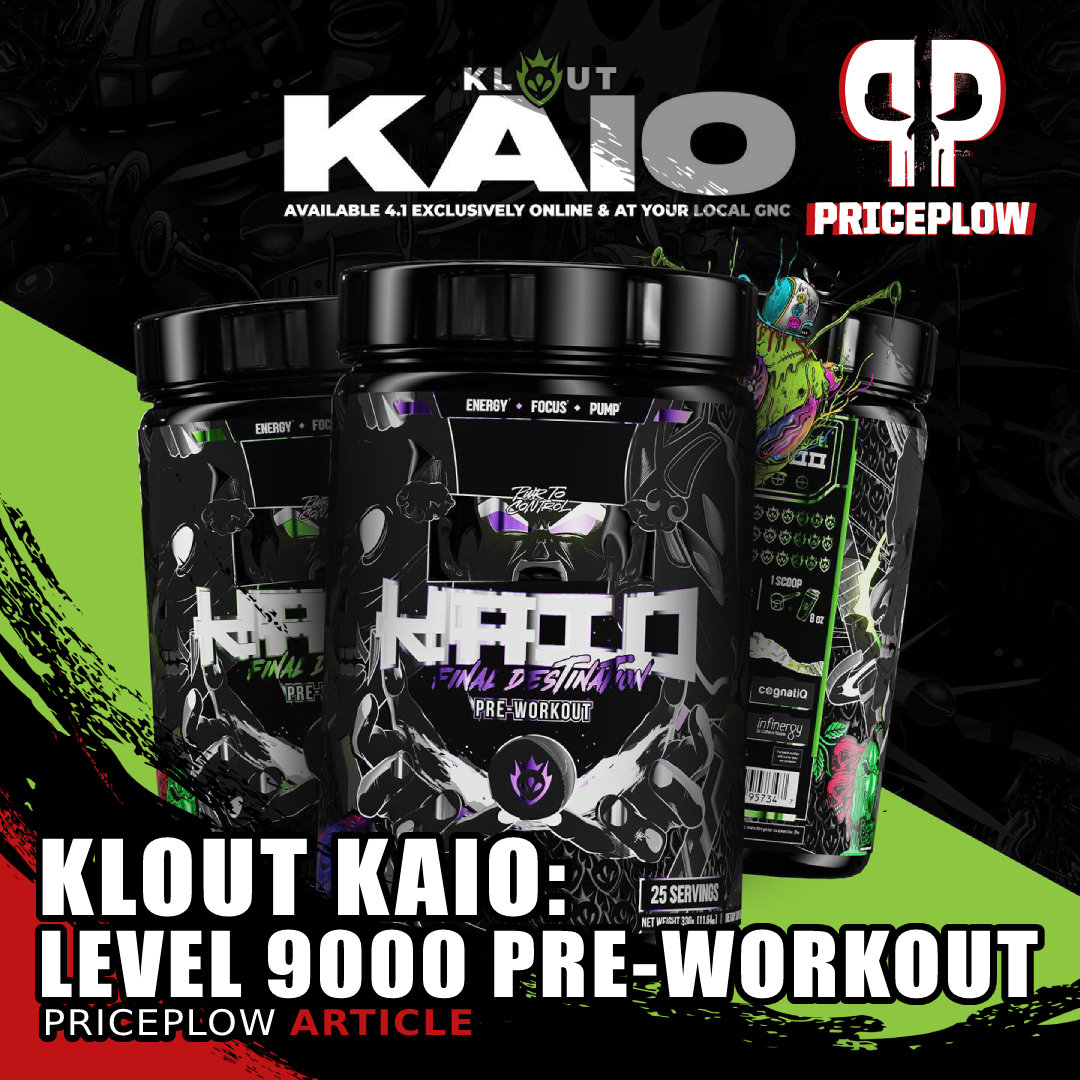
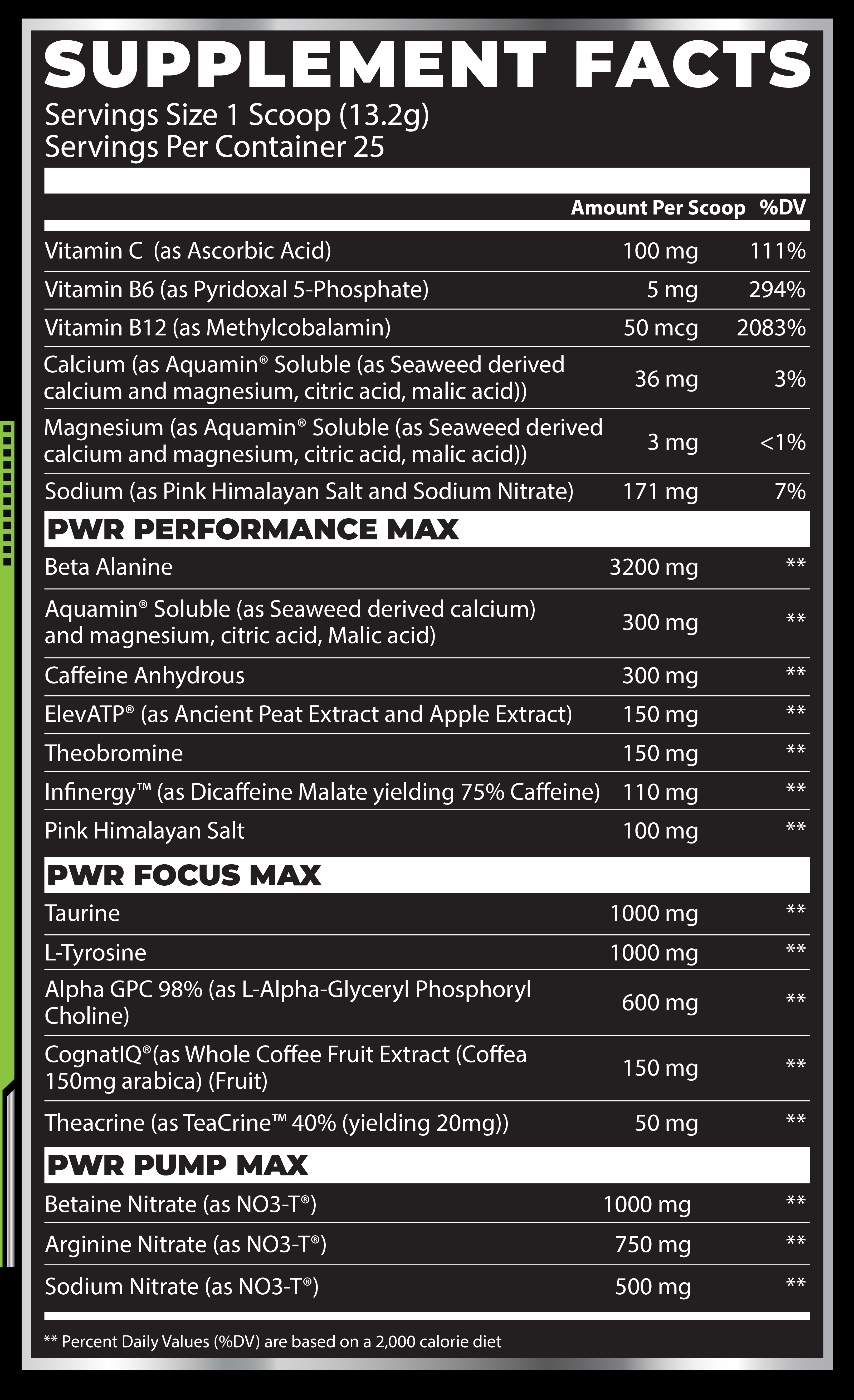
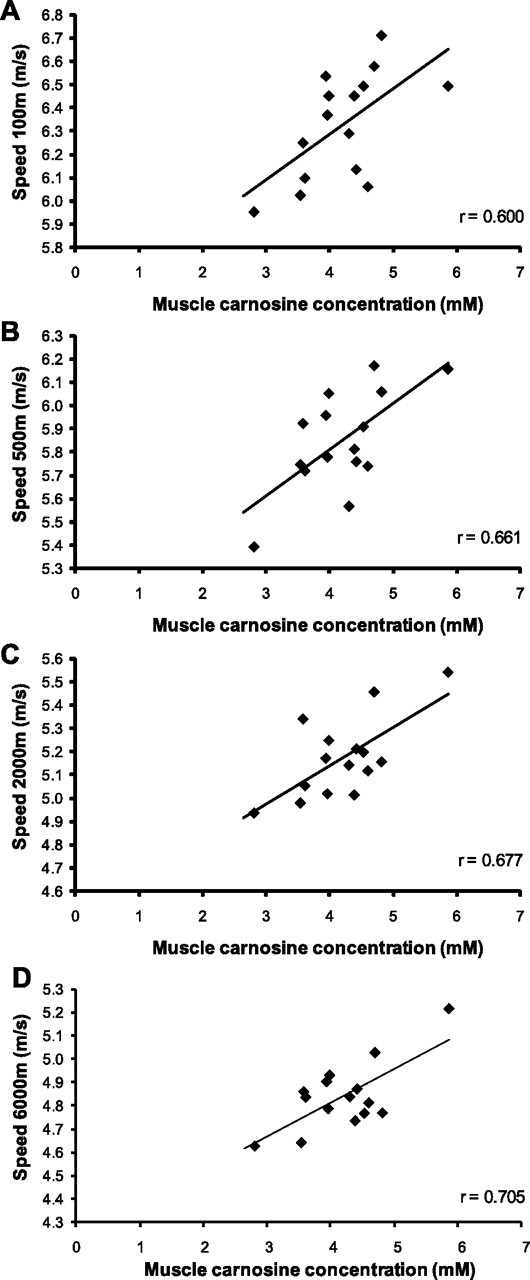
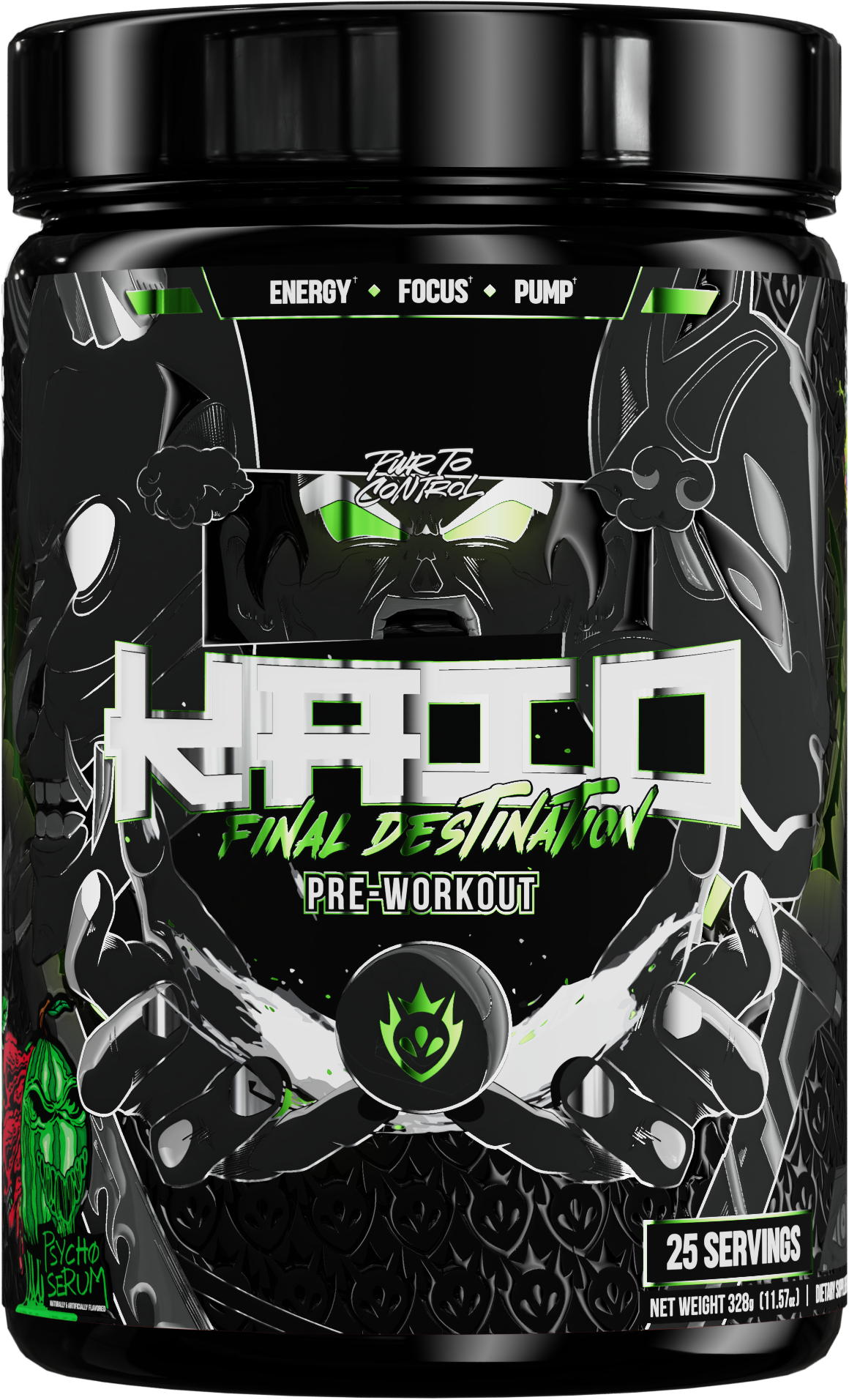
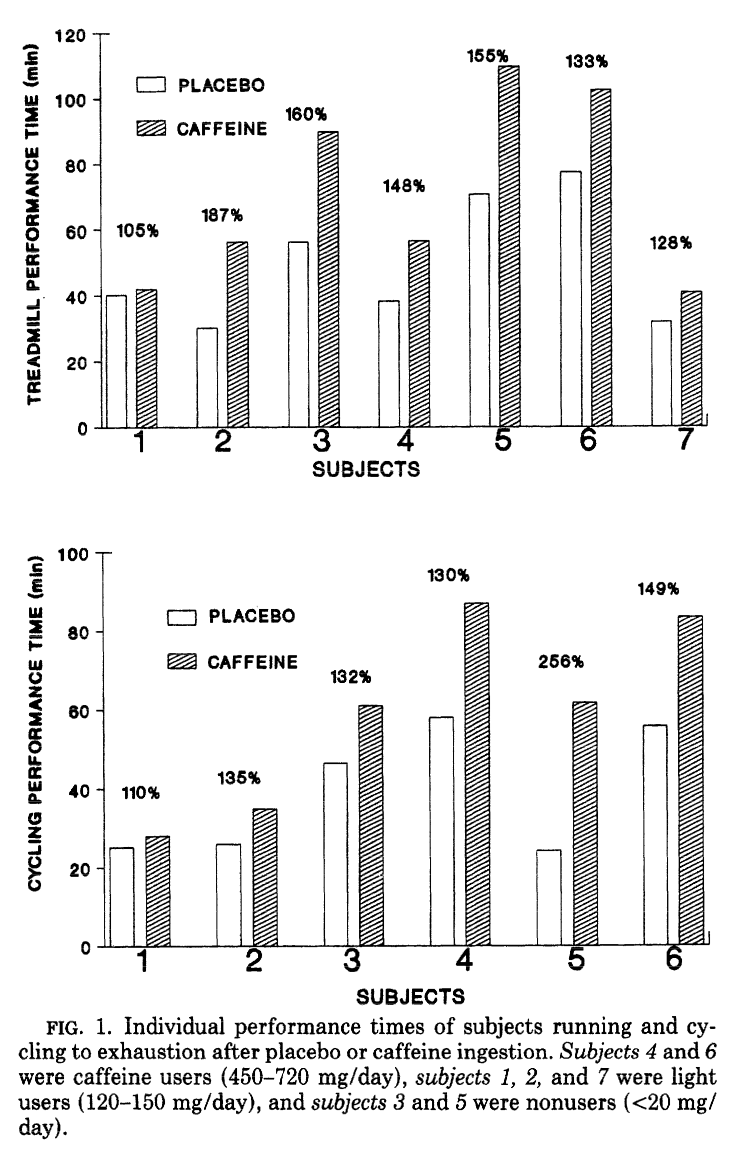

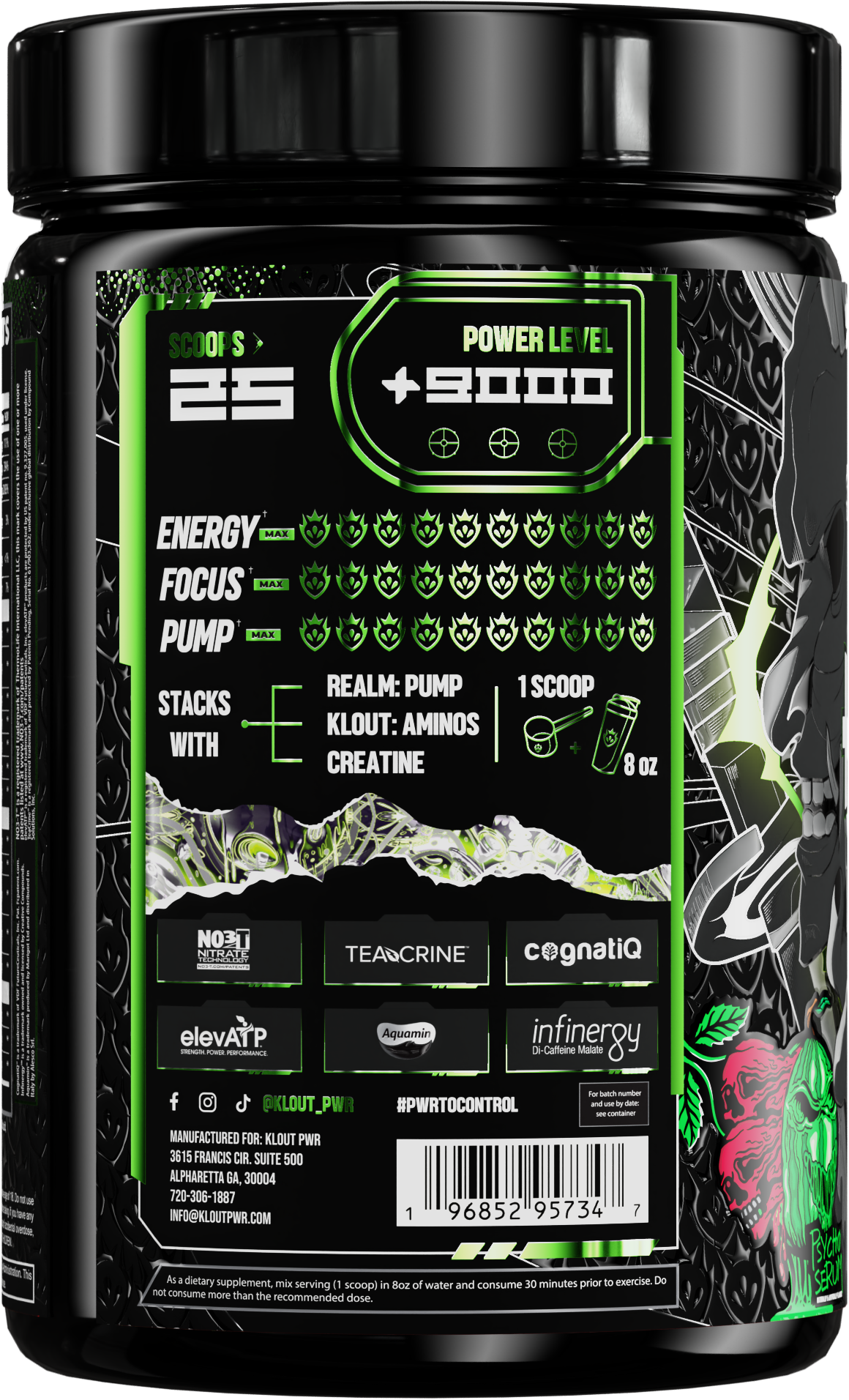
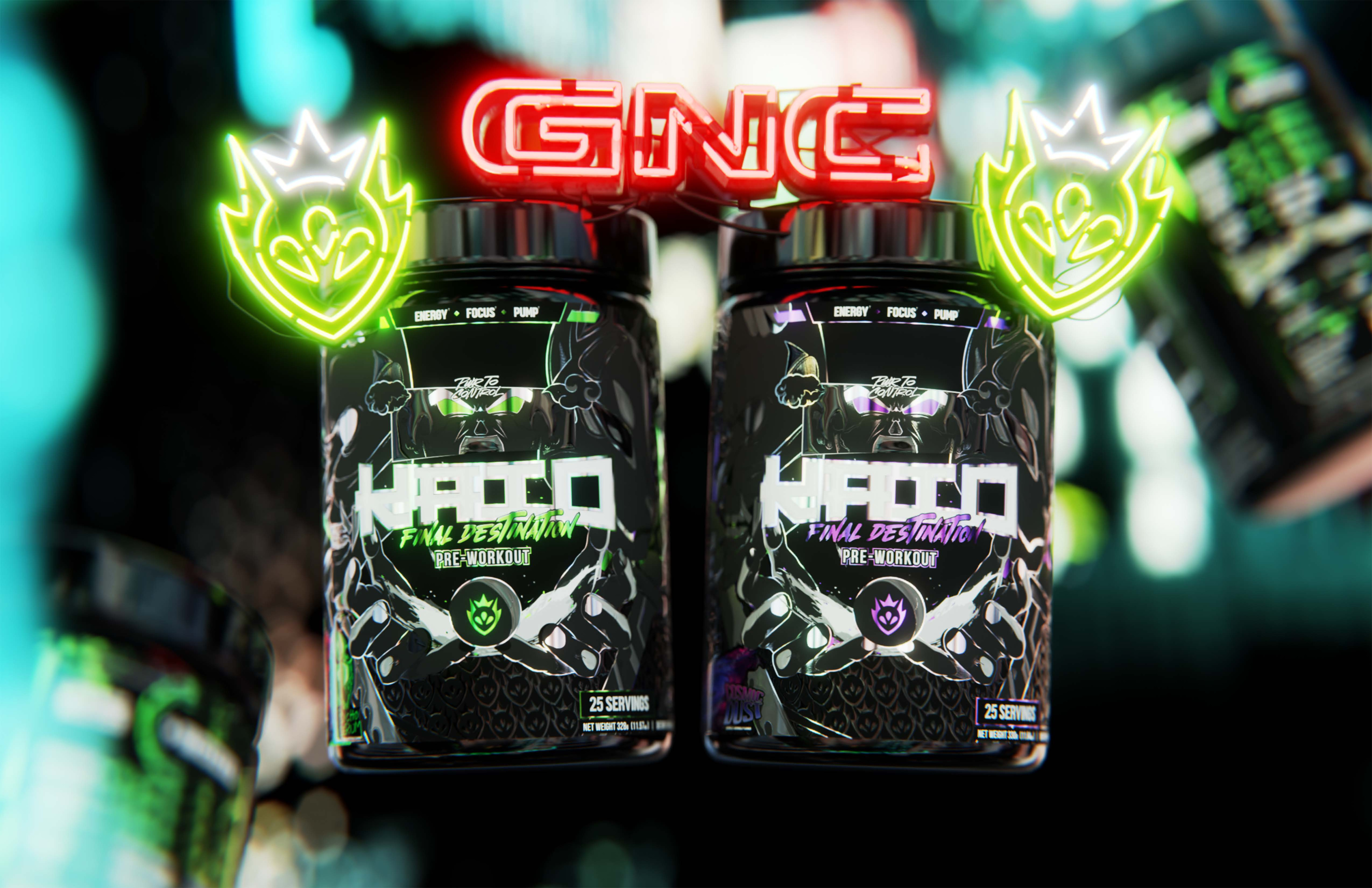

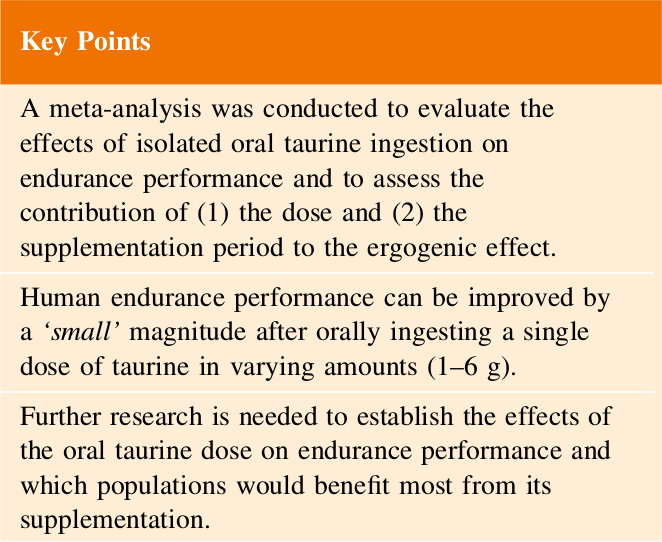
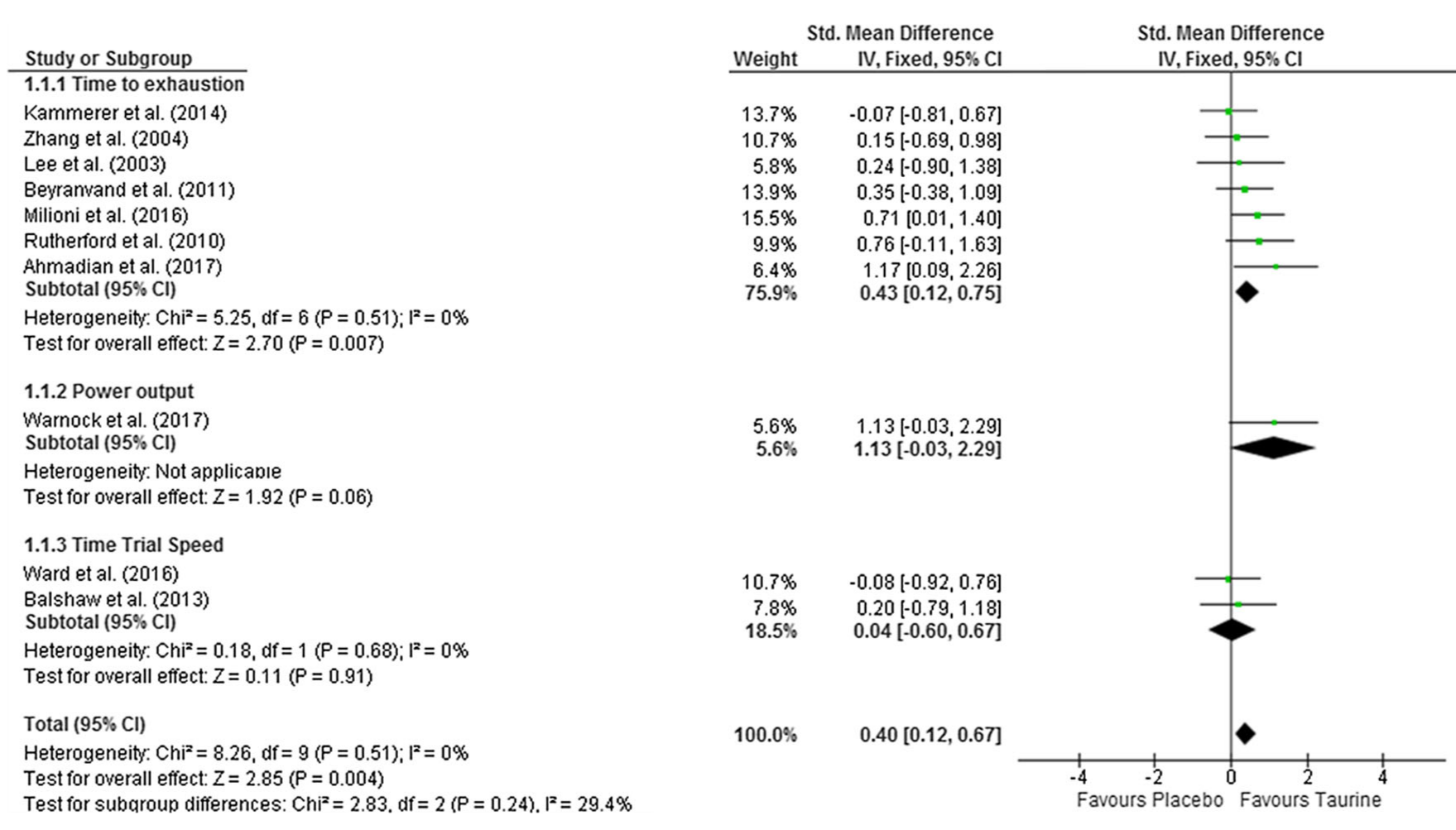
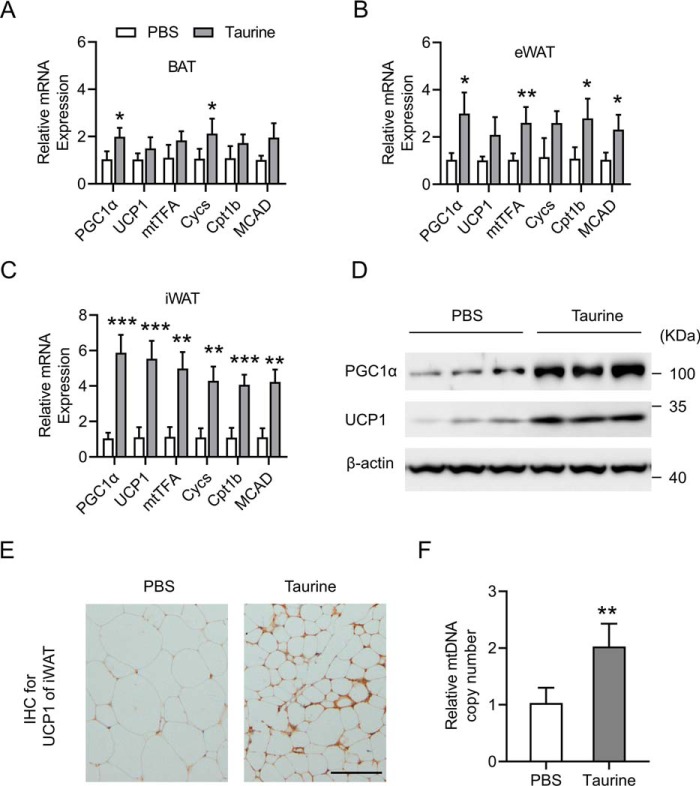


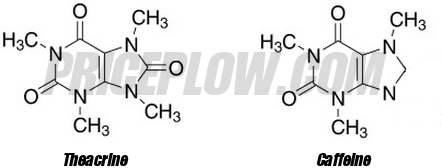
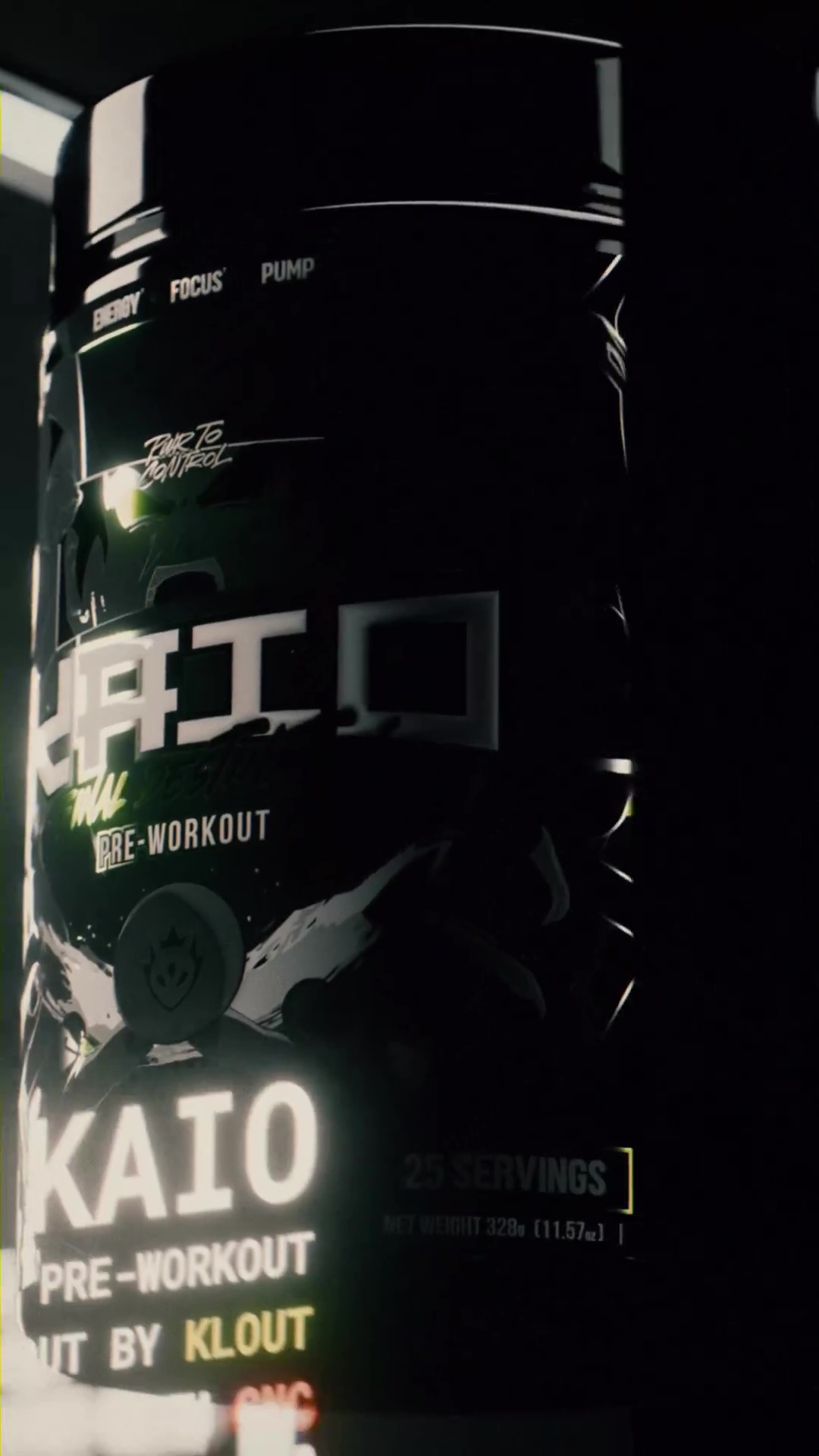
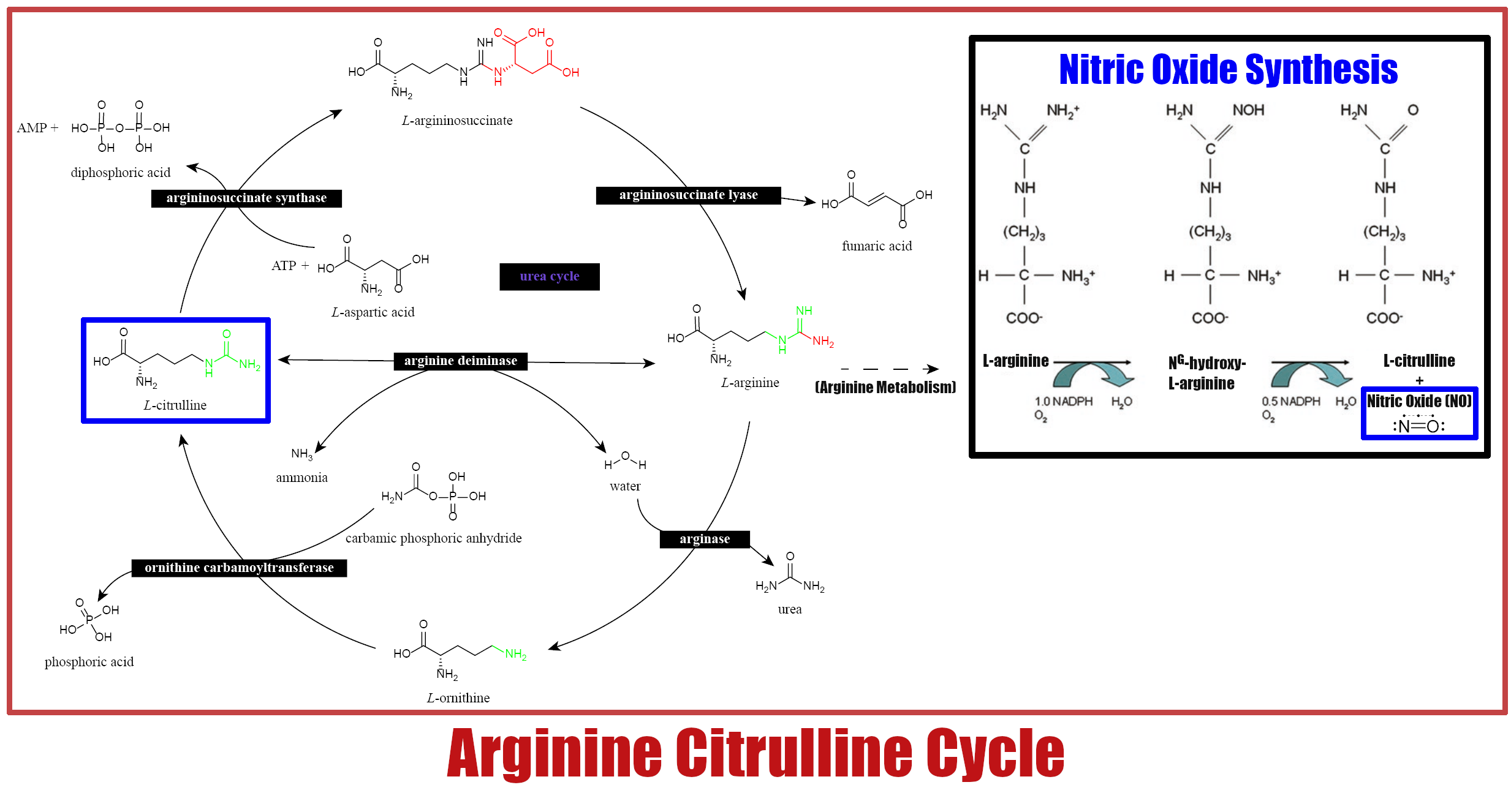
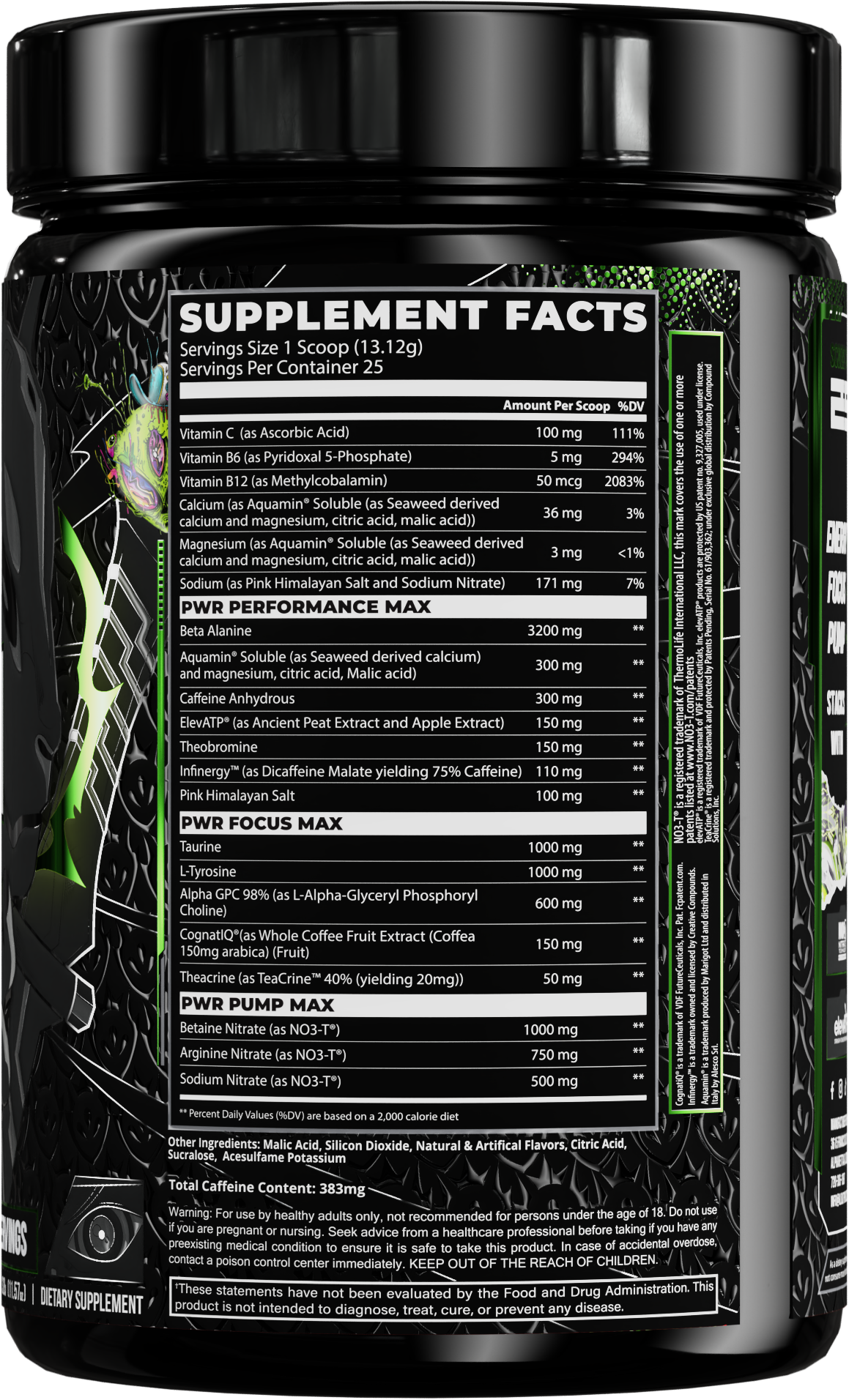
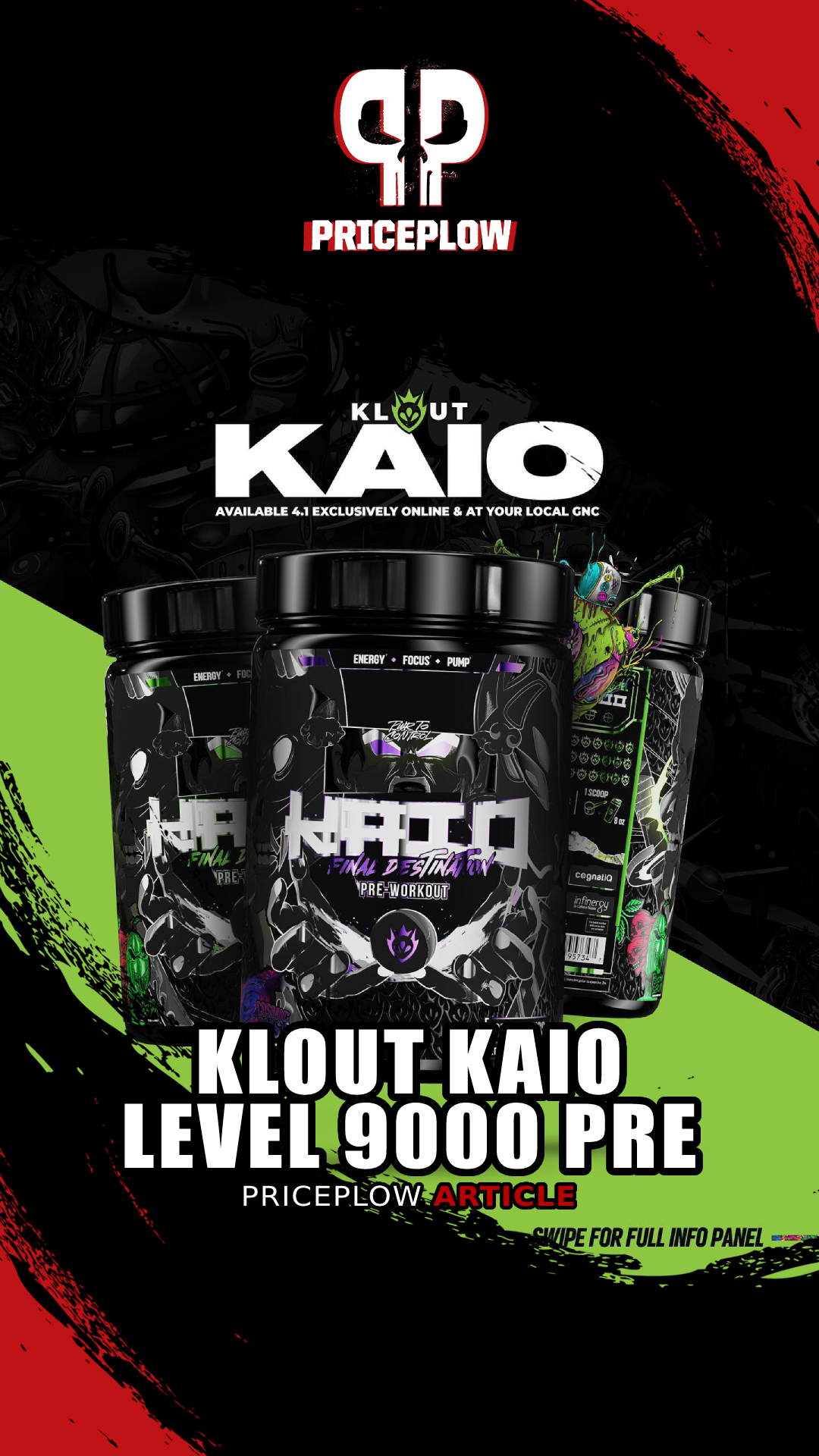



Comments and Discussion (Powered by the PricePlow Forum)